Welcome back to Worm School. This summer, I’m making a plan for finally finishing my overdue book project—and the advice I’m giving myself / the habits I’m adopting in my writing cave should, I hope, prove useful for anyone trying to make progress on an ambitious creative project.
If you’re just catching up on the series, the previous lessons are: Think smaller, Forgive yourself, Find some accountability, Follow your energy, Lean into ritual, and Seek funny leaps.
OK, on to today’s lesson:
Week Seven: Know Your Creative Cycle
For our penultimate lesson, I wanted to share a drawing by the artist Nicole Eisenman, from her exhibition with, and, of, on Sculpture, on view at Hauser & Wirth’s Paris gallery until September 21st.
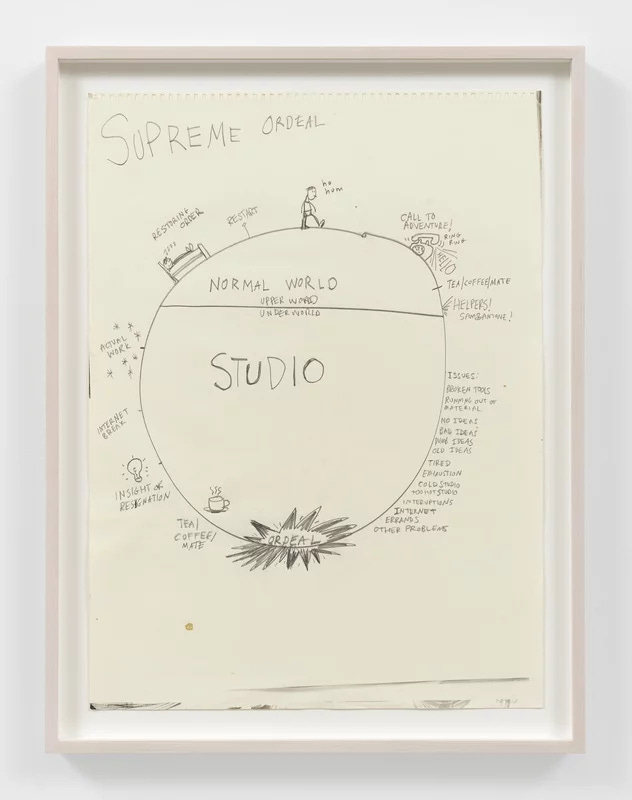
This is a witty take on Joseph Campbell’s concept of the hero’s journey, which Campbell and his followers have often diagrammed as a circle:
Seeing the hero’s journey reinterpreted as the artist’s daily routine gave me such a surge of delighted validation. Yes, this is what it feels like, chipping away at a big creative project day after day after day. A SUPREME ORDEAL on repeat, with a laundry list of issues that must be run through even before you get to the ordeal itself: broken tools, running out of material, no ideas, bad ideas, dumb ideas, old ideas, tired, exhaustion, cold studio, too hot studio, interruptions, internet, errands, other problems.
Eisenman’s drawing made me think about how useful it can be to know our own creative cycle—or to know something about it, to have some idea of how our individual cycle operates. Granted, to some extent the creative process is a universal mystery—that’s what keeps me writing about it week after week; I’m fascinated by how people try to arrange their lives to get the most out of themselves, creatively, while also recognizing that we have limited control over any of it.
That said: Over time, with practice and observation, I think most artists develop some sense of how their own cycle usually proceeds. For example, the playwright Lillian Hellman once said that she carries projects forward on daily currents of “elation, depression, hope.” She said:
That is the exact order. Hope sets in toward nightfall. That’s when you tell yourself that you’re going to be better the next time, so help you God.
Another example: Researching my second book, I talked to the writer Maggie Nelson about her work habits, and she told me that a lot of her writing starts as intensive “reading cycles,” during which she’ll make notes with a mechanical pencil in the margins of books. When she reaches the end of a cycle, she’ll go back through the books and type up all her notes and see where she is. At some point, she knows it’s time to start writing:
It’s kind of cheesy, but I’ll just start writing sentences in my head. And then it seems like I’ve hit some kind of tipping point where the research should be over and the writing part should happen.
Or here’s Zora Neale Hurston describing a frequent dynamic in her work, in a 1938 letter:
Every now and then I get a sort of phobia for paper and all its works. I cannot bring myself to touch it. I cannot write, read, or do anything at all for a period. . . . Just something grabs hold of me and holds me mute, miserable and helpless until it lets me go. I feel as if I have been marooned on a planet by myself. But I find that it is the prelude to creative effort.
I have to imagine that, for Hurston, knowing this was part of her usual cycle was some comfort. In my experience, the worst part of being stuck or blocked is worrying that it is a permanent condition, that you will never make anything worthwhile again. But if you can say to yourself, ah, this again . . . it helps.
That’s why I think it’s worth trying to get a handle on our own patterns—it keeps us from getting too down when things stall, and it keeps us from getting overconfident when we hit a patch of effortless productivity. (Those never last either, alas.) And it helps us—perhaps—to arrange our lives to be in sync with our own unique cycles.
Here are a couple more visual representations:
That one is by Toothpaste for Dinner; the following cartoon, by
, may be an even more accurate representation of the process, at least for us work-from-home freelancers . . .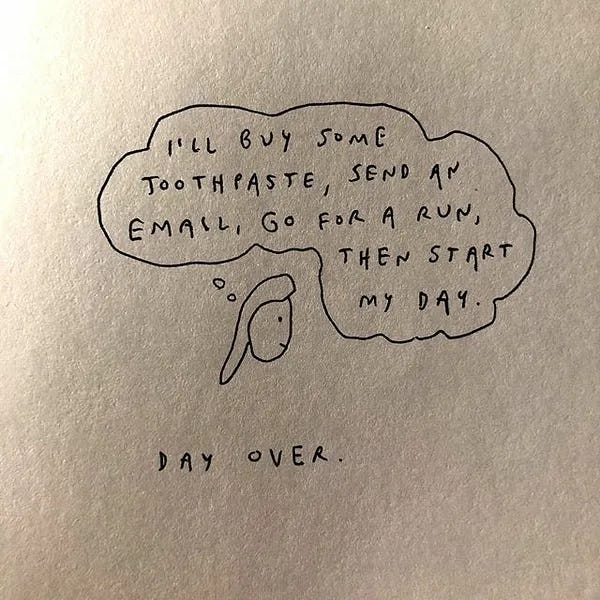
So here’s my exercise for us all this week: Describe your own creative cycle—or, even better, DRAW IT. I would love to see your visual representations, no matter how modest. After this post goes live, I will start a Substack Chat thread where you can share your drawings—or you can email me yours and I’ll add it to the bottom of the web version of this post.
If describing or drawing your entire cycle is too ambitious, try to at least label one aspect of it. Lillian Hellman wrote on currents of elation, depression, hope. Maggie Nelson has reading cycles that lead to tipping points. Lorraine Hansberry once described a phase of “blobby-globby days” that came around between bursts of productivity. What phase do you inevitably run into with each project?
Here’s my attempt at drawing my creative cycle—I’ll add your submissions below.
Reader submissions:

Thanks for reading! I’ll see paid subscribers next week for the final Worm School lesson; I think it’s going to be the most important lesson of all, so if you’d like to receive it next Monday please consider upgrading to a paid subscription.
Paid subscribers are also welcome to write with me on Zoom every weekday morning until the end of August (and perhaps beyond—we’ll see). This has been a really lovely experiment in virtual accountability and I’d love to see more of you there—join anytime.
After the final Worm School lesson next week, I’m taking several weeks off from the newsletter to focus on my book project—the normal newsletter format/schedule will resume September 9 and continue every other Monday after that.
Finally, if you’re just catching up on Worm School, here’s the entire series so far:








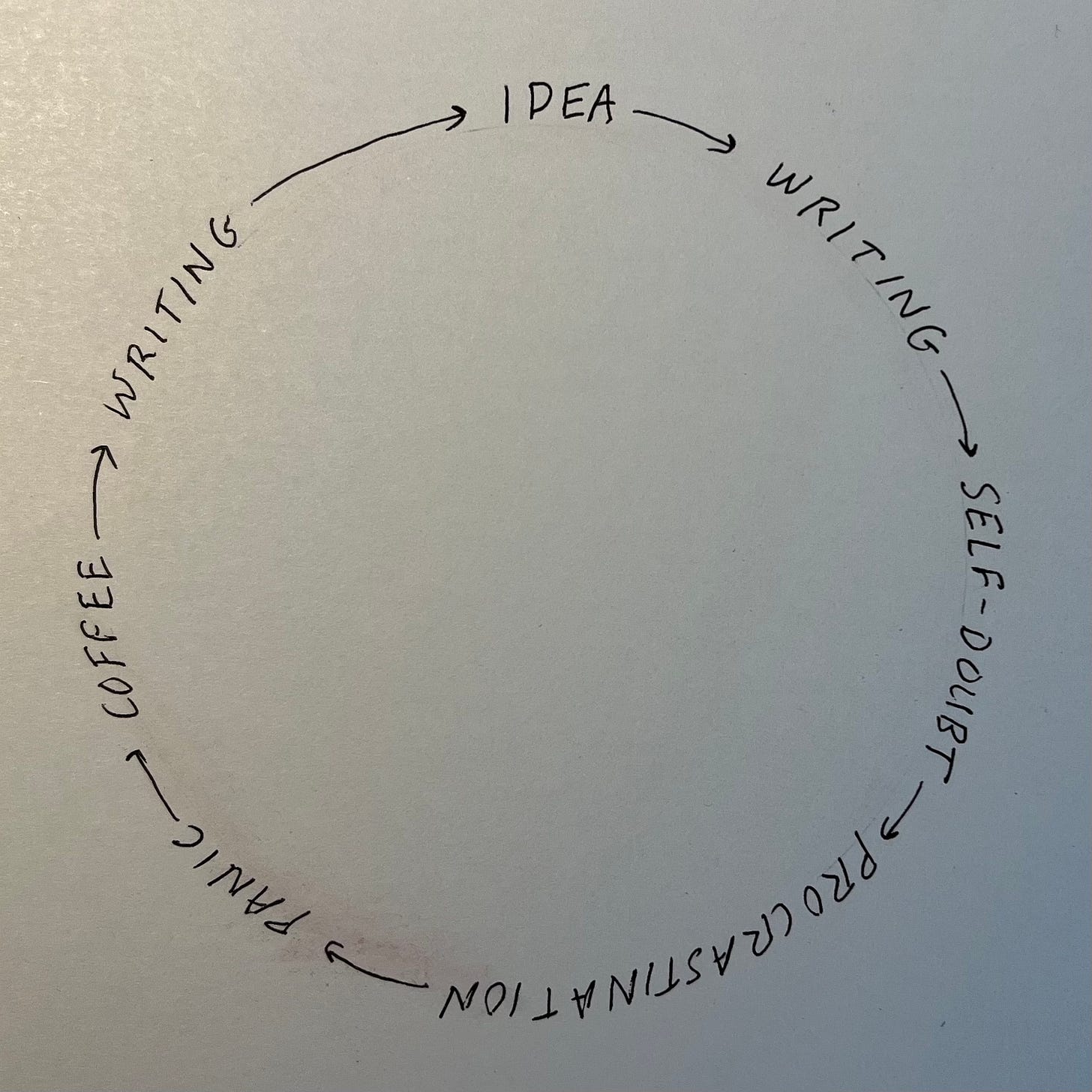
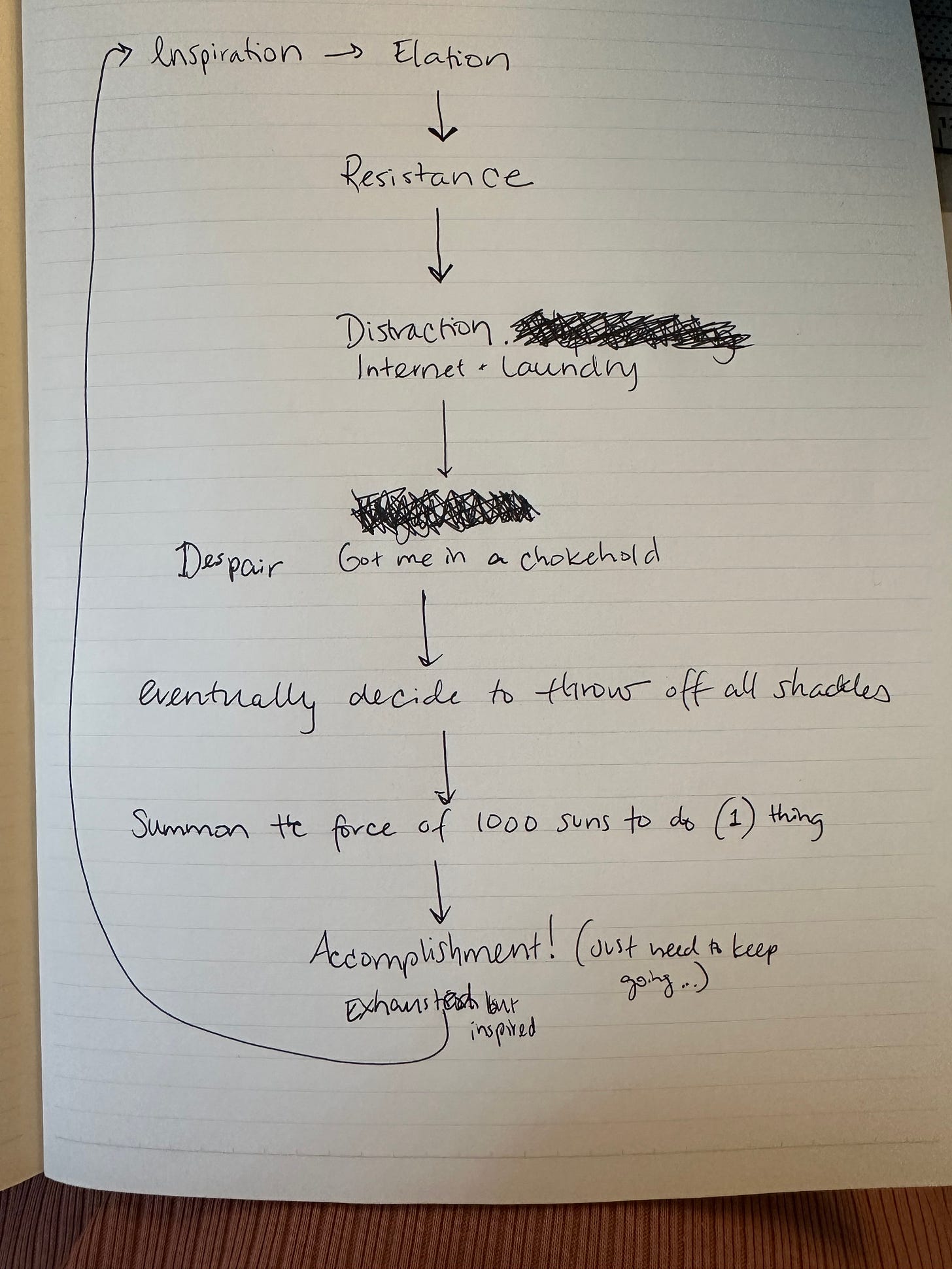
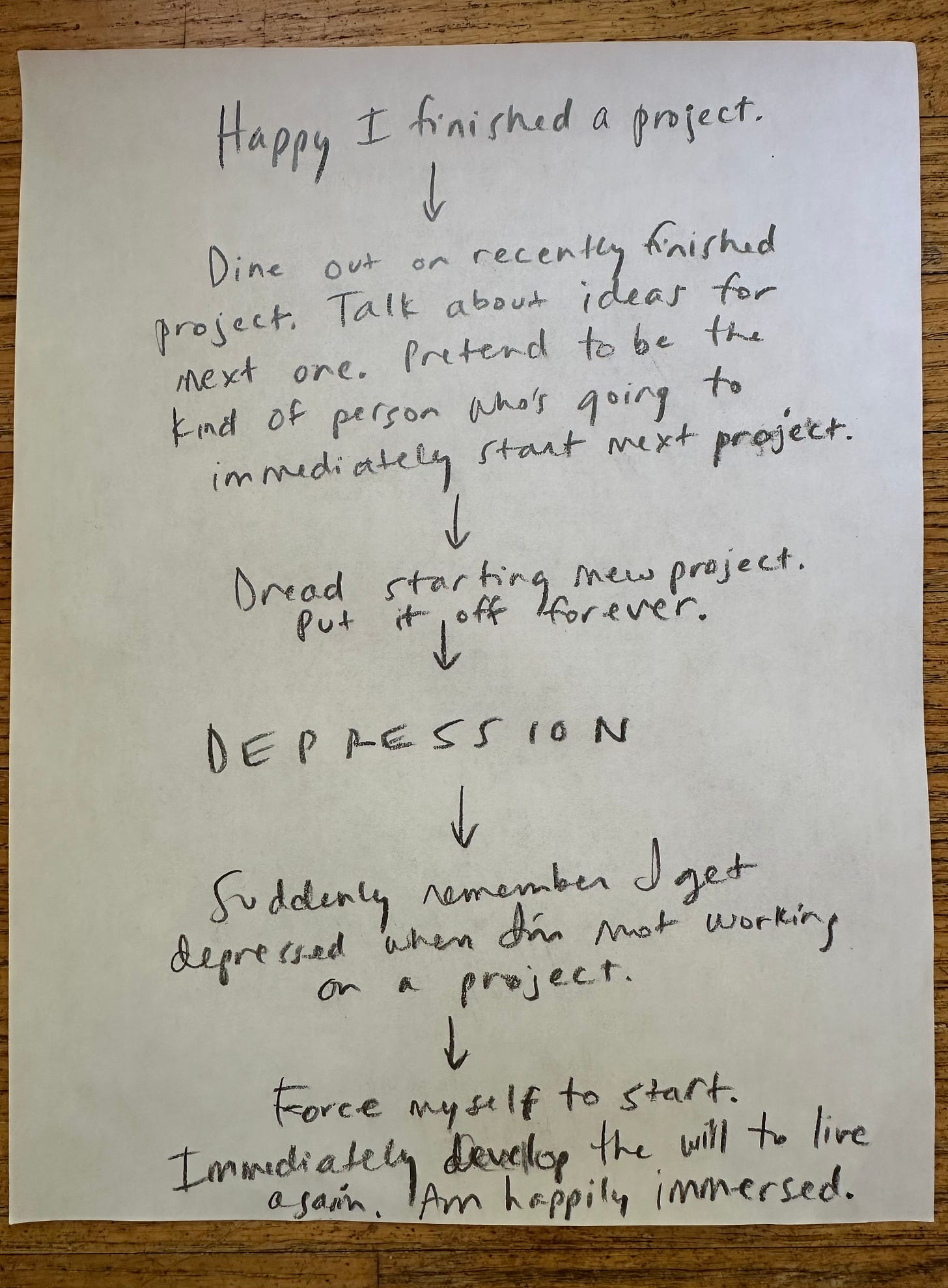

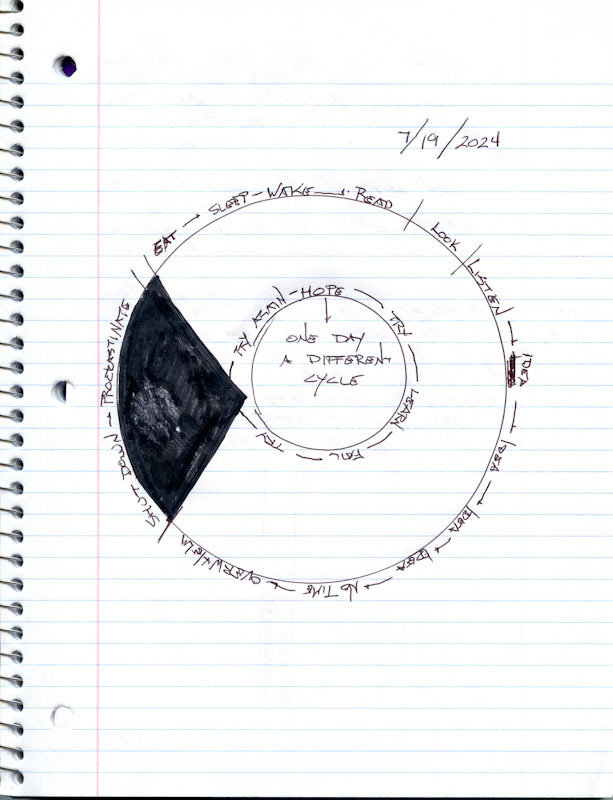

So interesting, definitely recognise these daily and project creative cycles but after 25 years of having a menstrual cycle, I’m only just starting to pay attention to the effect that it has on my creativity - a week of hormonal driven crippling self-doubt each month to throw into the mix!
Recognizing there is a cycle to the creative process has been reassuring.